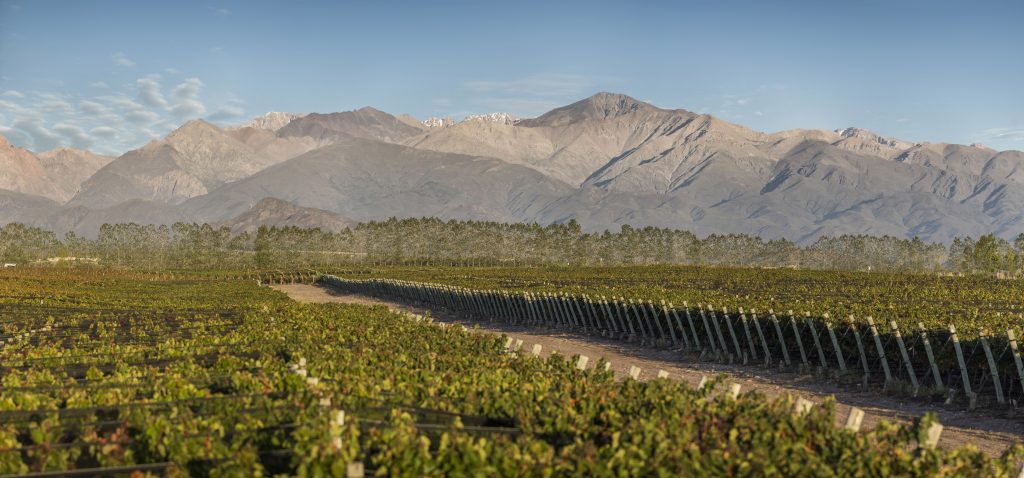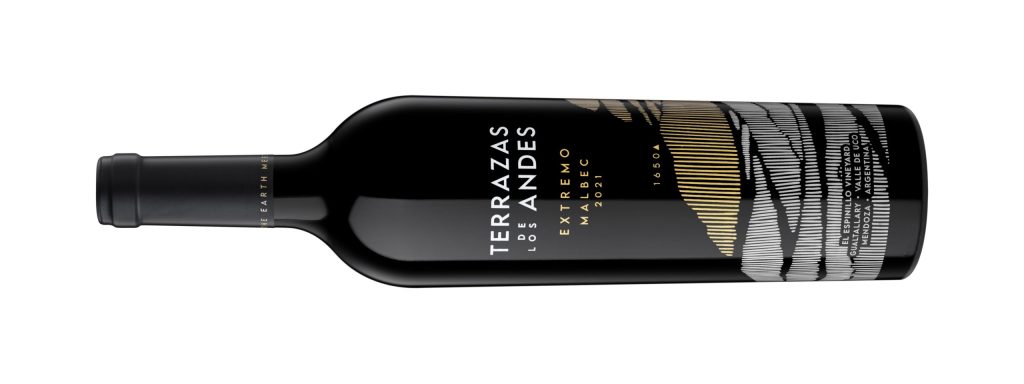This website uses cookies so that we can provide you with the best user experience possible. Cookie information is stored in your browser and performs functions such as recognising you when you return to our website and helping our team to understand which sections of the website you find most interesting and useful.
Terrazas de Los Andes’s new Extremo Malbec shows the ‘future of Argentina’s fine wine’
Terrazas de Los Andes, a pioneer of high-altitude winegrowing in Argentina, is launching a single vineyard expression Malbec from what it claims is one of the country’s highest vineyard this October, pointing to the future of Argentina’s fine wine.

Speaking to the drinks business at a tasting last week, new estate director Lucas Löwi said that the Terrazas de los Andes Extremo Malbec, which comes from a 2ha plot in Gualtallary called El Espinillo, at 1650m above sea level is likely to become “an icon” of Argentina and high altitude wines.
It is the latest release from the project that was started 30 years ago with a vision to create fresh and elegant mountain wines that spoke of the terroir.
“Elevation and altitude has been very important for us,” he said. “We want to keep going forward and aiming for more freshness and elegance.”
He argues that Argentina has built its image from “generic Malbec in a generic way” – but now “it’s time to talk specifically about terroir” – Malbecs from Las Compuertas, Altamira, Los Chacayes and Gualtallary, “which are very, very different soils.”
Onwards and upwards
Terrazas de los Andes was founded by Frenchman Hervé Birnie-Scott with its first vineyard, in Lujan de Cuyo, having been planted in 1929, making it one of the oldest malbec vineyards in the country. The second project was started at Paraje Altamira in the south of the Uco Valley in 2006, followed by Los Chacayes the following year, and in the 2008, the team planted El Espinillo, 1650m above sea level, in Gualtallary.
As well as its flagship Malbec, the team produces a number of parcel wines, reflecting the increasing altitude: Terrazas de los Andes Parcel Los Cerezos, at 1070m in Las Compuertas; Terrazas de los Andes Parcel Los Castaños at 1100m in Paraje Altamira; Terrazas de los Andes Parcel Lican at 1200m in Los Chacayes, with a strong fruit profile, well-rounded tannins and structured, but with good tension “very different to the heavy old style”; and the new Terrazas de los Andes Extremo Malbec, at 1650m in Gualtallary (RRP £160).
Drip irrigation has been a huge part of the success of these projects, according to Löwi – “We used to do flood irrigation, but in order to go to up we needed more careful management of the water, so we trained in Israel to learn about drip irrigation, did the first in Uco Valley,” he explained – but also the reason that it is unlikely that more vineyards will be built at this altitude, as you can no longer get permits for irrigation, he said.
Although the team have been crafting wines from this vineyard for some years, and learning from it, they have decided to release Extremo with the 2021 vintage – a cool year but one that achieved good acidity and balance on the tannins.

Lowi describes the wine as having a “Pinot Noir style”, with the power, but not the structure that is normally associated with Malbec.
Extremo and Terrazas de los Andes Parcel Lican in particular are “the future of Malbec in Argentina”, Löwi said, and while the team are “still in our learning curve of this altitude”, he remains convinced that Extremo will be an “icon wine from Argentina, one of the mountain fine wines that in the future we may compare with other super high vineyards, such as Shangri-La”.
“For me, coming from Mendoza, it’s very important that we start to think about the characteristics of mountain wines as they are very different to those grown lower,” he said. “One of the reasons I came back to Mendoza [from Spain, where he was the estate director of Bodega Numanthia in Toro] is because of the future, the diversity of the terroir.”
As part of the company’s commitment to regenerative viticulture – Terrazas de los Andes became the tenth winery in the world to be awarded Regenerative Organic Certified status in July last year – a lot of care is taken with water use and soil management, including not removing the soil, using cover crops and enriching the biodiversity by encouraging the natural flora and fauna.
“When you leave the cover crop, we have native herbs and we see how that impacts the wines,” he said. “We want to preserve our natural patrimony which is the magic of mountain life. As guardians we want to protect this fragile ecosystem that lies here because it’s the future of our country.”
Risks
He admits that it is “risky” to plant that high due to the exposure to climate events such as frost which is not possible to manage at that altitude – for example the day before the harvest was due to start on 30 April, there was a frost in which around 30% of the yields were lost, prompting the team to pick the entire crop in one day, rather than the week. However, the estate has invested in a ventilator, which is common in Spain, that can help protect the wines when there’s a risk of frost, but it is a very expensive (US$100,000) investment for a few hectares.
“And you can still suffer from frost – it’s a way to fight, but not a guarantee. If you want to grow that high, you assume low yields, but the quality of the fruit is amazing.”
The plan is to “keep going forward and aiming for more freshness and elegance”.
“A great wine begins in the vineyards and the most important thing is to produce the grape,” he notes, adding that the winemaking is non-interventionist. Grapes are hand-harvest, and gravity fed into tanks where they have a cold maceration to extract elegant, velvet tannins, before adding the yeasts and macerating for three weeks.
After racking into a mixture of 225L and 400L barriques and foudres (around 40% new oak, the rest are used barrels), they are aged for 12 months, before being blended and kept in bottle for a year. In the case of Terrazas de los Andes Parcel Lican, (grown at 1200m in Los Chacayes), around a third of the wine goes to ceramic eggs “to find a more aromatic expression”, Lowi explains, resulting in “complexity, lovely darker fruit, more spice and savouriness”.
Light-weighting
Terrazas de los Andes has also released its flagship Malbec, Terrazas de los Andes Malbec 2022, an easy-to-drink high altitude wine made from grapes growing across 200 parcels which are sited between 1070-1400m. “Each terroir has a different soil profile,” Löwi explains, “It has lots of sun, as we go higher, there are more stones – and in the case of Altamira, some big stones – and calcareous material from the river. All of this gives complexity, freshness, fruitiness and elegance – the three dimensions we were looking for.”
This wine, which produces around 1.5m bottles a year, is now coming in the company’s lightest bottle (385g), a reduction of 30% in weight and 24% in the carbon footprint. The change has been well-received in the Nordic countries, Canada and the UK, he says, but consumers in Latin America and China still equate quality with heavy bottles. However, the team remains committed to “breaking that paradigm” and is convinced that perceptions in these markets will change. “We’re the lightest bottle in the segment so we’re building the future.”
Terrazas de Los Andes Malbec is present in 70 countries, with majority of distribute in the US, Argentina, UK and China, along with the Nordics, Germany, and Mexico.
Read more:
Unchartered territory: a deep dive into mountain wine
Terrazas de los Andes becomes Regenerative Organic Certified

